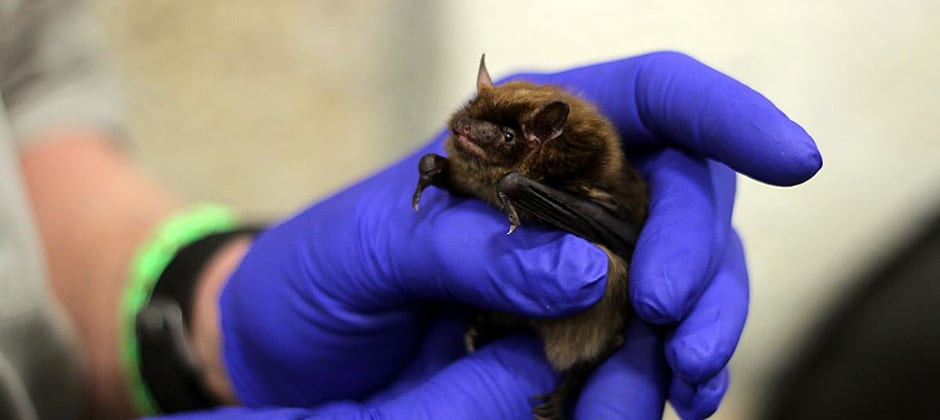Share this article
Researchers use genetics to track rabies in bats
Researchers have begun to sequence the genes of rabies viruses detected in New England bats using a technique they say can provide important information about how rabies spreads and t be adapted to track other RNA viruses, including coronaviruses, in animals.
The effort came about after researchers at the Connecticut Veterinary Medical Diagnostic Laboratory—part of the Department of Pathobiology and Veterinary Science at the University of Connecticut—noticed they had been seeing more and more bats testing positive for rabies.
“We receive a lot of suspected rabies cases, both domestic and wild, including a lot of skunks and raccoons,” said lab director Guillermo Risatti. “But also lately, we have been receiving more bats, and some of them are carrying the virus.”
That caught the attention of Risatti’s colleague Dong-Hun Lee, an assistant professor in the department. Since some bats migrate long distances, he figured, they might spread the virus more than terrestrial mammalian wildlife. Surprisingly, public databases have limited numbers of rabies virus genomes sequences. “There were zero,” Lee said. “There are some publications about raccoon variant viruses from the United States, but there was no recent paper about bat rabies.”
Teaming up, Risatti, Lee and their colleagues published a paper in Viruses in which they sequenced rabies viruses in six bats collected in the lab between 2018 and 2019, including hoary bats (Lasiurus cinereus) and big brown bats (Eptesicus fuscus). The bats had different genetic types of the rabies virus, the team found. Big brown bats, which don’t migrate, had viruses similar to those found in nearby states like New York, New Jersey and Pennsylvania. Hoary bats do migrate, however, and they carried viruses genetically similar to those found as far away as Washington, Idaho and Arizona. “We assumed that this highly similar sequence identity might be related to long distance and multidirectional movements of migratory bats,” Lee said.
Sequencing viral genomes can be used to estimate migratory pathways of viruses like rabies, the researchers say, and it can point to where outbreaks may have originated. “In the future, when outbreaks happen, we can trace back,” Lee said. “This can be really useful reference baseline data for outbreak investigations.”
The team only sequenced a few genomes, though, and while the information was interesting, Risatti said, “this is just the very tip of the iceberg.” The team hopes to pursue further questions, including how various rabies variants may act differently in their hosts. “It could be something very interesting for us to look at,” he said.
The researchers have also applied this methodology to studying the origins of coronaviruses in bats, which may have harbored the virus that caused the COVID-19 pandemic. They used a similar approach to detect coronavirus in dogs.
“There are a lot of viruses circulating in vectors, that yes, this technology can be applied,” Risatti said.
Lee plans to perform similar work on infectious wildlife diseases in East Asia later this year.
Header Image:
Researchers sequenced the complete genome of rabies viruses found in big brown bats, like this one.
Credit: Courtney Celley/USFWS








